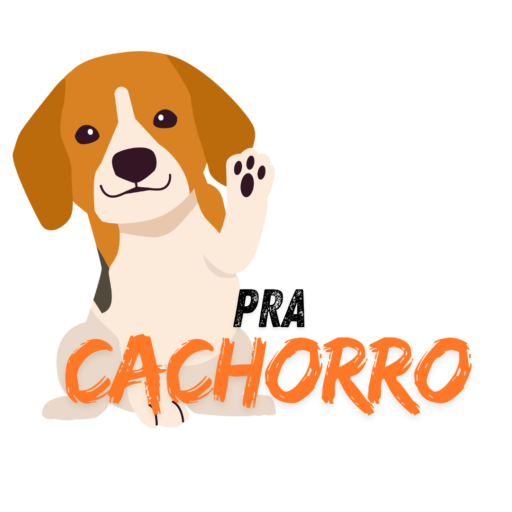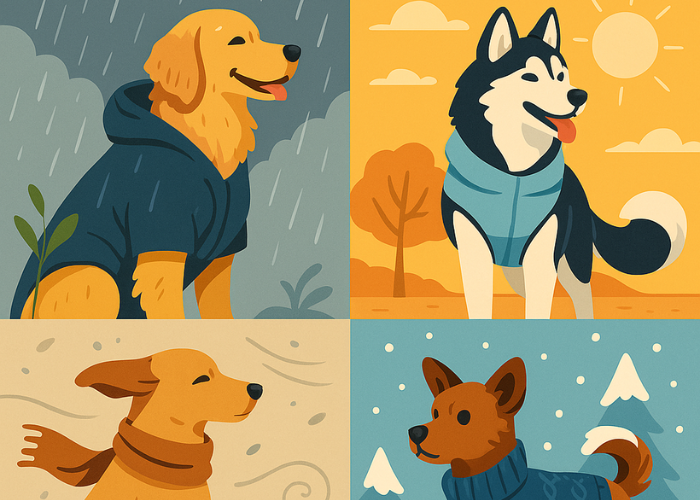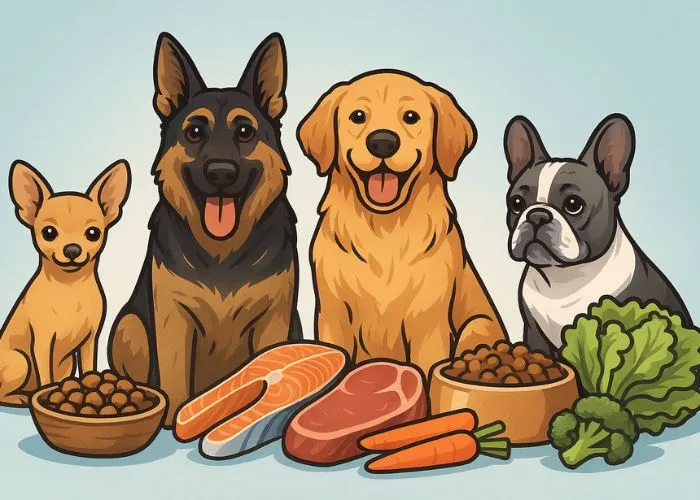Finding the right toys for your dog is more than just a trip to the pet store—it’s a key part of ensuring your dog’s happiness, health, and mental stimulation. With an overwhelming number of options available, many dog owners wonder: Which toy is best for my dog?
The answer depends largely on your dog’s size, age, and individual play style. Choosing the wrong toy can not only bore your pup but also pose safety risks. This guide will help you navigate your options and find the perfect toys to keep your dog entertained, engaged, and safe.
🦴 Why Choosing the Right Dog Toy Matters
Dog toys are more than playthings—they support healthy development, reduce boredom, promote exercise, and even help prevent behavioral issues. Whether you have a high-energy puppy or a senior dog that prefers a cozy cuddle toy, the right choice can improve your dog’s quality of life and strengthen your bond.
📏 1. Choose Toys According to Your Dog’s Size
One of the most crucial factors when selecting toys is your dog’s size. An improperly sized toy can pose a choking hazard or be too bulky to enjoy. Here’s a breakdown by dog size:
🐶 Small Dogs (e.g., Chihuahuas, Pomeranians, Toy Poodles)
- Opt for lightweight, small toys that are easy to carry and bite.
- Soft rubber or plush toys are perfect for gentle chewers.
- Avoid toys with tiny detachable parts that could be swallowed.
🐕 Medium Dogs (e.g., Beagles, Cocker Spaniels, French Bulldogs)
- Choose medium-sized balls, rope toys, or textured chews.
- Toys should be large enough to avoid swallowing, yet easy to grip.
- Moderate durability is often enough for this group.
🐕🦺 Large Dogs (e.g., Labrador Retrievers, German Shepherds, Rottweilers)
- Invest in durable, tough toys made of hard rubber or nylon.
- Look for extra-large bones, tough chew rings, or big tug toys.
- Avoid plush toys unless your dog is a gentle giant—strong jaws can destroy them in minutes.
💡 Pro Tip: Always supervise your dog with new toys until you’re confident they won’t be chewed apart and swallowed.
⏳ 2. Consider Your Dog’s Age
Your dog’s life stage significantly impacts the kind of toy they need. Puppies, adult dogs, and seniors all have unique physical and mental needs.
🐾 Puppies (0-12 months)
- Prioritize soft, flexible toys to ease teething pain.
- Use teething rings, textured chew toys, and gentle plushies.
- Interactive toys (like treat dispensers) help develop motor skills and focus.
🐕 Adult Dogs (1-7 years)
- Choose toys that encourage active play, mental stimulation, and durability.
- Great options include rubber balls, puzzle toys, interactive feeders, and tough chews.
- These toys help prevent boredom and destructive behavior.
🦮 Senior Dogs (7+ years)
- Older dogs often have weaker jaws and sensitive gums, so go for softer toys.
- Low-impact playthings, such as plush toys, soft rubber bones, or slow-roll balls, are ideal.
- Light activity helps keep them mobile without overexertion.
🛡️ 3. Safety and Durability Come First
Safety should be the top priority when choosing toys for your dog. Here’s what to watch for:
- Use toys made of non-toxic, BPA-free materials.
- Choose sturdy construction—especially for aggressive chewers.
- Avoid toys with small pieces, loose stitching, or fragile components.
Materials like natural rubber, nylon, and durable canvas are safe and long-lasting. Always inspect toys regularly for signs of wear and replace damaged ones promptly.
🚨 If a toy shows signs of tearing, cracking, or missing pieces—discard it immediately to prevent accidents.
🧠 4. Stimulate Your Dog’s Mind and Body
Dogs need mental enrichment as much as physical exercise. Choose toys that challenge them and provide outlets for natural behaviors like chewing, chasing, and problem-solving.
Top Enrichment Toys:
- Puzzle toys that dispense treats
- Snuffle mats for foraging fun
- Interactive balls that roll unpredictably
- Chew toys with various textures
Physical Play Favorites:
- Fetch balls, frisbees, and tug ropes for high-energy dogs
- Chase toys for herding breeds
- Soft squeaky toys for dogs that enjoy sound-based play
Keeping a balance of both active and interactive toys helps improve overall health and prevents boredom-related behaviors like chewing furniture or excessive barking.
🕵️♂️ 5. Match Toys to Your Dog’s Behavior and Play Style
Understanding your dog’s unique personality and behavior can help you select toys they’ll truly enjoy:
| Dog Behavior | Best Toy Types |
|---|---|
| Heavy chewer | Indestructible rubber or nylon chews |
| Fetch lover | Balls, frisbees, automatic launchers |
| Cuddler | Plush toys, soft stuffed animals |
| Curious/nosey | Puzzle toys, treat dispensers |
| Sound-seeker | Squeaky toys, crinkle plush toys |
Pay attention to how your dog interacts with toys and rotate them regularly to keep things fresh and exciting.
🐕 Final Thoughts: The Right Toy = A Happy Dog
Choosing the best toys for your dog involves more than grabbing the cutest one off the shelf. It’s about understanding your dog’s needs, preferences, and life stage. The right toy keeps your dog happy, healthy, and mentally stimulated.
Remember:
- Always supervise playtime with new toys
- Replace worn or damaged toys promptly
- Offer a variety of toys to suit different moods and needs
- Engage with your dog—toys are better with you involved!
Toys aren’t just accessories—they’re tools for development, exercise, bonding, and pure joy. Make thoughtful choices, and your furry friend will thank you with tail wags and happy zoomies.
🐾 FAQ – Frequently Asked Questions About Dog Toys
1. How can I tell if a toy is safe for my dog?
Look for toys made from non-toxic materials, like natural rubber or food-grade nylon. Avoid anything with small parts, sharp edges, or loose stitching that could pose a choking hazard. Always monitor your dog during play.
2. What kind of toy is best for a teething puppy?
Choose soft but durable toys made from rubber or plush with varied textures. Teething rings, rubber chews, and small squeaky toys can help relieve gum pain and keep puppies entertained.
3. My dog destroys every toy. What should I do?
Look for toys labeled “indestructible” or “designed for power chewers.” Brands like Kong, Goughnuts, and West Paw make ultra-tough toys built for dogs with strong jaws. Avoid plush or lightweight toys in these cases.
4. Can large dogs play with plush toys?
They can—but supervision is important. If your large dog likes to cuddle or carry toys rather than chew them aggressively, plush toys are fine. For rough players, choose reinforced plush with double stitching.
5. How can I keep my dog interested in toys?
Rotate toys weekly to prevent boredom. Mix in interactive and treat-dispensing toys for extra mental stimulation. Playing with your dog regularly also keeps their interest high and strengthens your bond.



